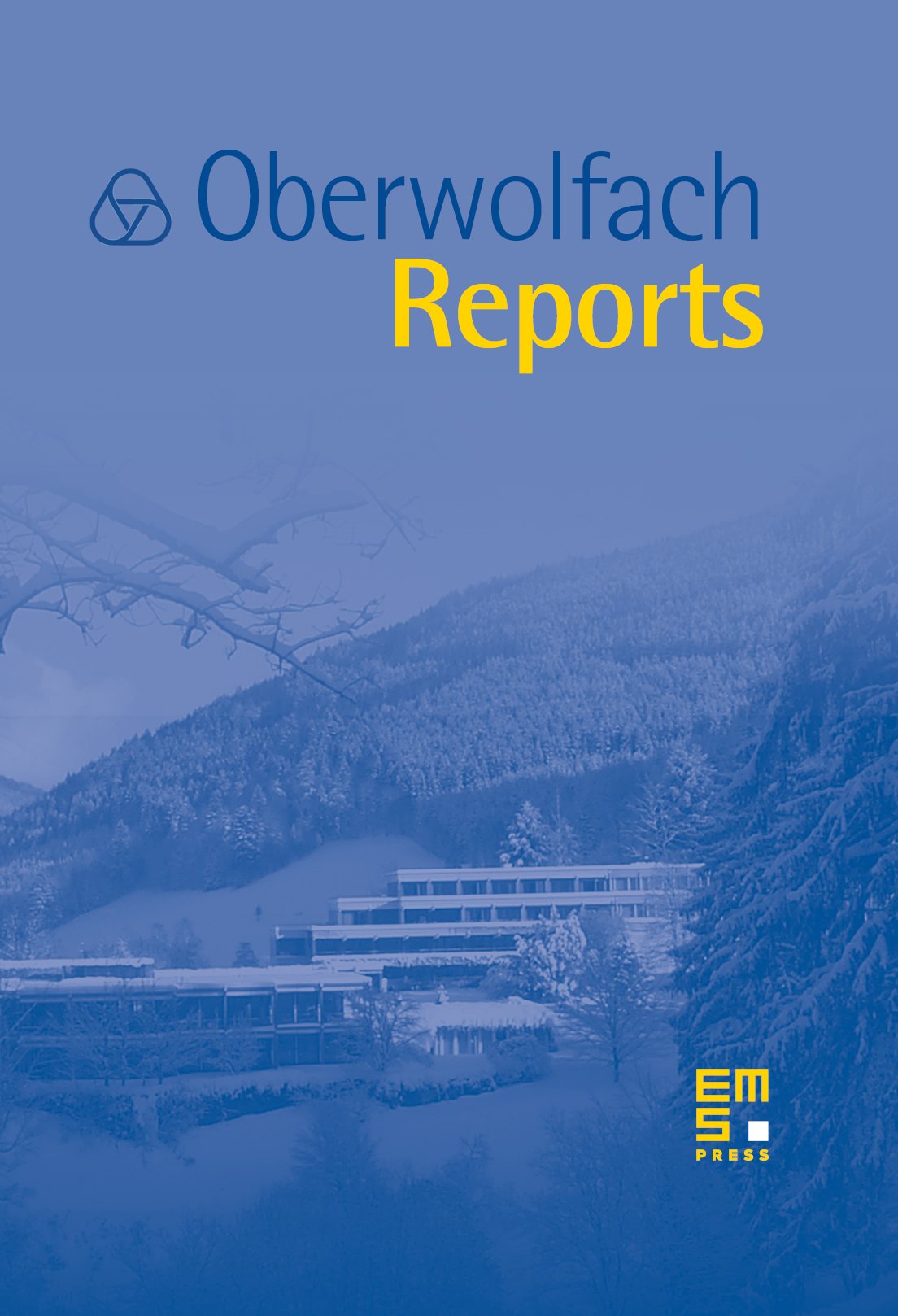Mathematics and Physics of Disordered Systems
Michael Baake
Universität Bielefeld, GermanyWerner Kirsch
FernUniversität Hagen, GermanyHajo Leschke
Universität Erlangen-Nünberg, GermanyLeonid Pastur
Université Paris 7, Denis Diderot, Paris, France

Abstract
It was the aim of this workshop to bring together researchers from different fields, working on various aspects of the theory of disordered systems in theoretical and mathematical physics. On the one hand, this means triggering an interaction between researchers working on these phenomena using methods from theoretical physics and those working with mathematical tools on the subject, as well as scientists mainly interested in the mathematical methods themselves. On the other hand, the conference also tried to bring together researchers working on related but well distinguished physical phenomena like Anderson localization in random systems, the theory of aperiodic order, the random matrix theory its applications (e.g., in quantum chaos).
To do justice to this mix of people with different background, about half the talks were survey talks (with an extended time for the speaker), giving an introduction to the corresponding topic in general as well as to recent results. We found it important to give enough time for physicists to explain their ideas in this way. About a similar number of mathematical and physical review talks were given. It was a nice experience that there was always a very lively and intense discussion after the talks and in many cases even during the talks. Many of these discussions were continued outside the lecture hall in the free time in the afternoons and the evenings. In this way, many interactions started during the week, in particular between people who would otherwise not have met.
An important topic in the meeting was the theory of “quasiperiodic” order in various forms. Consequently, a survey talk on quasicrystals was scheduled. It triggered interesting discussions with various other disciplines. One highlight was the demonstration that and how Delone sets and Schödinger operators defined on them form a natural bridge between the world of perfect (periodic) order and that of stochastic phenomena. Though this is still in its infancy, it became clear that a high potential for unified approaches is still to be unraveled.
One of the main topics of the conference was the theory of Anderson localization for random Schrödinger operators from different points of view. There were reviews by theoretical physicists on the subject explaining basic ideas about Anderson localization, its applications to the quantum Hall effect and the supersymmetric approach to this field. There was also special emphasis on the phenomenon of “weak localization” both from physicists and mathematicians.
Another interesting topic was the explanation of the Aizenman–Molchanov method to prove Anderson localization in the continuum. This extension of the method is rather new and is considered to be very important for future developments in the area. In the field of Anderson localization/delocalization, there were also presentations of new developments. There was also a survey talk on threshold phenomena for the random Landau Hamiltonian which is not only an interesting result by itself, but may also lead to progress toward a proof for the existence of delocalized states.
A number of talks were devoted to the theory of quantum Hall conductance. Both the physical theory and recent mathematical progress were explained. Presumably this topic encouraged the highest amount of discussion among the various disciplines. The phenomena are not yet understood from a physical point of view, even the model itself is under discussion.
The theory of random matrices is a discipline that evolved rather independently of the theory of random Schrödinger operators although there are obvious intersections between these fields. It was therefore an important task of the conference to bring together people from these fields. As a result of this attempt there are joint research papers in preparation triggered by the meeting, e.g., on Hamiltonians on random graphs which can be interpreted both as examples of random matrices and as discrete Schrödinger operators.
The use of poster presentations and the official allocation of one evening session to this proved successful in that it sparked lots of discussions that went on during the meeting. It became evident that some results can actually profit from such a presentation. In view of the fact that time for talks is limited, it might be a reasonable alternative, long used by other sciences, and some more wall space might help.
The unique atmosphere of the institute did its magic once again, and the combination with the excellent library makes Oberwolfach still one of the best possible places for meetings such as this one, also in view of the recent competition from places like BIRS in Canada.
Cite this article
Michael Baake, Werner Kirsch, Hajo Leschke, Leonid Pastur, Mathematics and Physics of Disordered Systems. Oberwolfach Rep. 1 (2004), no. 2, pp. 1167–1232
DOI 10.4171/OWR/2004/22